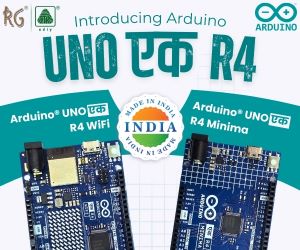Amid global supply chain shifts and rising tech nationalism, India’s bold leap into semiconductor manufacturing hinges on completing its chip-to-product innovation ecosystem.
India has long excelled in chip design but has faced challenges in semiconductor manufacturing due to various technological and commercial barriers. The COVID-19 pandemic served as a wake-up call, prompting the government of India to take decisive steps toward establishing a self-reliant semiconductor industry. Recognising the risks of dependency on foreign suppliers, the government introduced financial schemes and policy incentives to promote domestic chip manufacturing.
Given the current global trade and tariff war driven by geopolitical factors, India, having maintained a neutral stance, should strategically leverage this situation by developing a highly skilled workforce.
In the year 2024-25, several entrepreneurs took the bold step of setting up semiconductor fabrication (fab) facilities in India. While this marks a milestone, the journey is far from complete. The current situation can be likened to a newly opened restaurant, awaiting its first customers.
Who are the customers, and where are they?
The answer lies in the end-users of integrated circuits, embedded product developers, and manufacturers. These companies design and build electronic products that rely on semiconductors for applications across various industries, including automotive, consumer electronics, telecommunications, healthcare, defence, and many more.
To fully realise India’s semiconductor ambitions, the government must now expand its focus to strengthening the embedded systems ecosystem. Encouraging the growth of embedded product development companies will create demand for both chip design and manufacturing.
Role of educational institutions and industry collaboration
Educational institutions play a pivotal role in this transformation. Many government organisations in India offer intellectual property (IP) rights for chip design either free of cost or at a nominal price to academic institutions. The Ministry of Electronics and Information Technology (MeitY) is actively promoting chip designers by providing costly design software for free and assisting researchers in manufacturing chips at no cost to educational institutes.
To complement these efforts, universities should develop a skilled workforce not only for chip design but also for embedded systems development and programming. Establishing centres of excellence in embedded systems will enhance students’ skills in:
- PCB design
- Peripheral interfaces using wired protocols
- Wireless communication protocols
- Real-time operating system (RTOS) applications
Students must begin with fundamental wired protocols, progress to wireless protocols for Internet of Things (IoT) applications, and finally explore constraint-based RTOS applications in both areas. Educational institutions must actively collaborate with industry partners working in chip design and embedded product development. Additionally, the government should extend similar incentives to industries as those given to educational institutions, as industries have direct experience with real-world challenges and play a crucial role in embedded product innovation.
Strengthening the semiconductor ecosystem
A robust domestic semiconductor supply chain can only be achieved if India nurtures its end-user industries. This can be facilitated through
- targeted incentives for embedded product development
- R&D support for innovation in semiconductor applications
- Policy-driven procurement favouring Indian semiconductor manufacturers
- Collaboration between chip fabs and product developers
By completing this essential loop, India can position itself as a global semiconductor powerhouse.
Authored by Dr Haresh Suthar. The author is the Director of JIOTRONIK and an experienced engineering leader working in the design industry.









